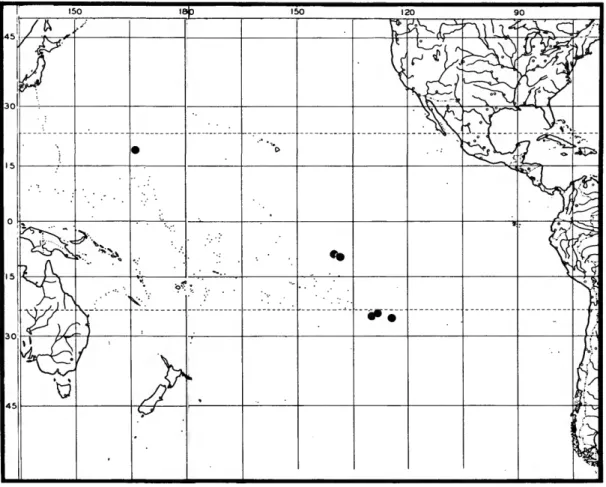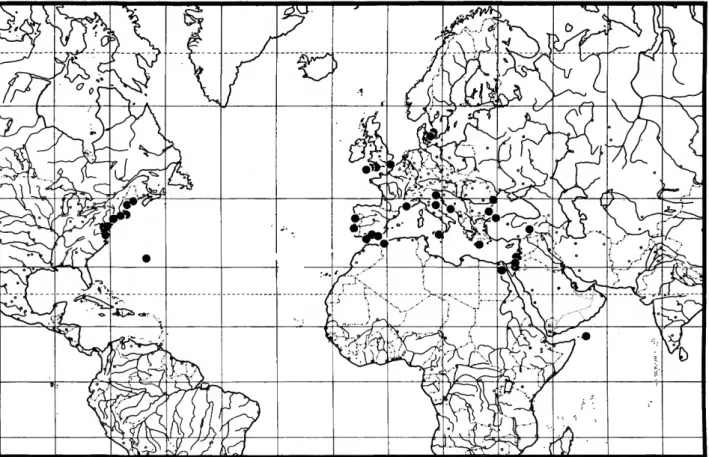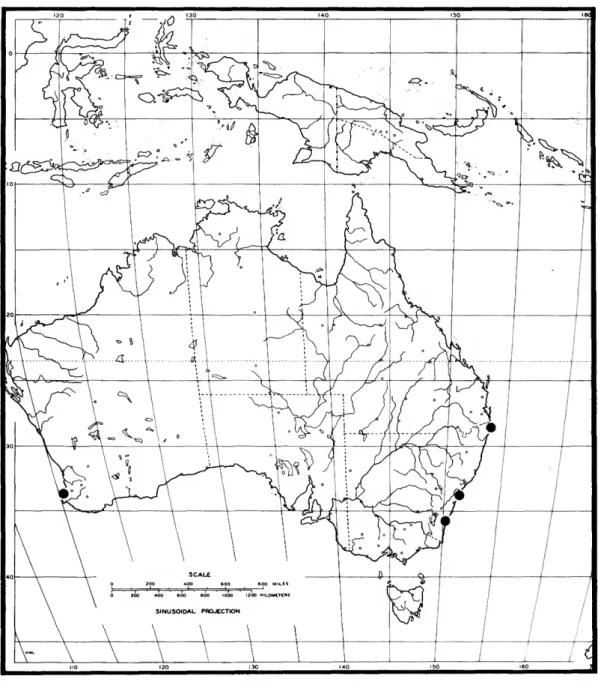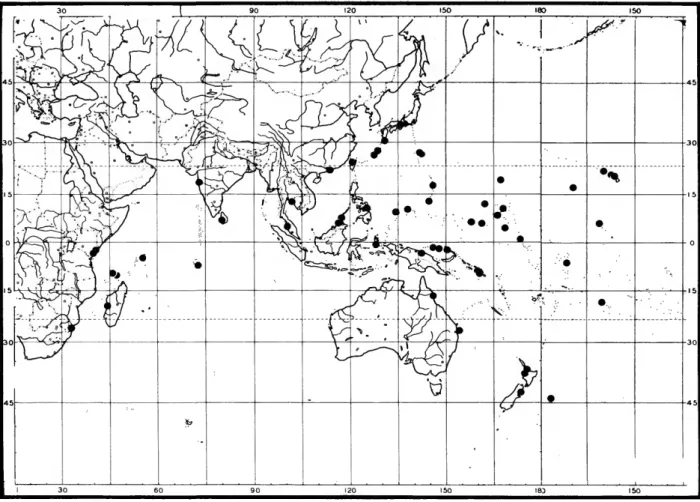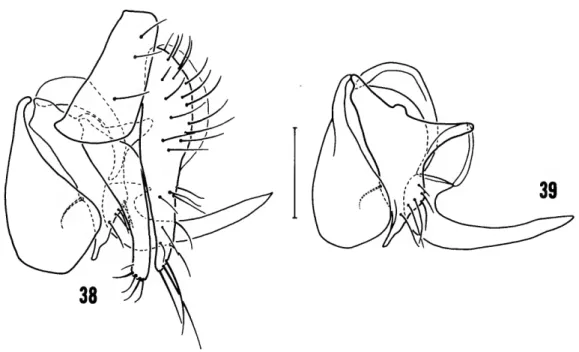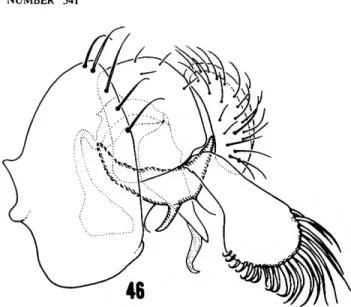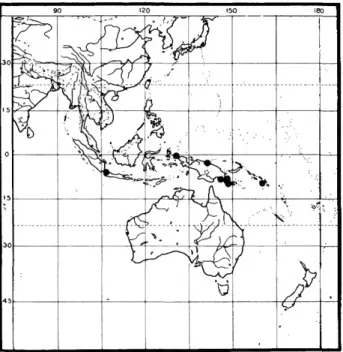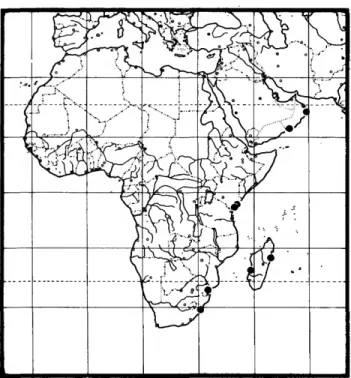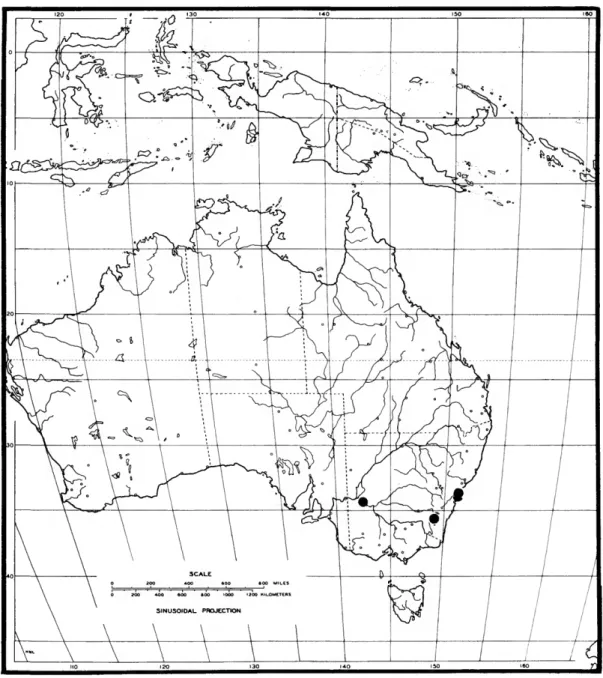New South Wales: Deewhy), H. The monophyly of Hecamede within the tribe Hecamedini is demonstrated and a hypothetical phytogeny of the included species is generated from a matrix of 23 characters. All known species of Hecamede and its outgroups are found in the Old World, and the likely origin of the genus occurred there as well, specifically within the Indian Ocean basin. Maps, keys to subgenera and species, and illustrations (scanning electron micrographs and line drawings) are provided to help identify the species.
Only Allotrichoma, sensu stricto, the most specific and widespread genus of the tribe, remains to be revised. Two venation ratios are commonly used in the descriptions and are defined here for user convenience (the ratios are averages of three specimens). ACKNOWLEDGMENTS.—Although this study was based primarily on specimens in the National Museum of Natural History, many others, especially type specimens of previously described species, were borrowed.
Species from the genus Hecameda occur mainly on seashores in most temperate and tropical regions of the world, sometimes in large numbers. A major departure from this generalization is the apparent absence of any species along the Pacific coast of the Western Hemisphere.
Proclinate fronto-orbital setae 2; gena with 1 black seta near middle 2 Proclinate fronto-orbital seta 1; gena either with a few to several black setae,
FIGURES 2, 3.—Hekameda (Hecamede) africana: 2, male terminalia, lateral side; 3, internal structures of male genitalia, lateral view. DIAGNOSIS.—This group of species differs from other lineages of the subgenus Hecameda by the presence of intrafrontal setae (not to be confused with the ocellar setae, which are inserted in front of the anterior ocellus); presence of black genal appendages (sometimes pale appendages are also present); lower genital height, which is about half the height of the eye; lack of posteroventral row of stout setae on fore femora and mostly to completely pale colored flagellum 1. DISTRIBUTION.—Widespread, occurring on marine beaches within the temperate and tropical regions of the Afrotropical, Australasian/Oceanic, Nearctic, Neotropical, and Palearctic regions.
Even the structures of the male terminalia are quite similar in some species, but the differences are consistent and are part of the set of characters used to distinguish species. In the former, the cercus bears a long, narrow process that extends ventrally from the ventromedial corner of the cercus, the surstylus. FIGURES 8,9.-Hecamede (Hecamede) brasiliensis: 8, male terminalia, lateral side; 9, internal structures of male genitalia, lateral view. Fig. 9) with an apical, hooklike process and a larger, subapical process; aedeagal apodeme (Fig. 9) sinuous, wider in lateral view towards middle; aedeagus (Fig. 9) long and narrow, gradually tapering to a bluntly rounded apex, shaped like a slightly curved, simple tube; hypondrium nearly 3 times longer than wide, anterior part only slightly wider than remainder, anterior margin mostly straight, at most very shallowly notched.
From specimens of//, africana, this species is distinguished by the more anterior position of the proclined fronto-orbital setae. The structures of the male terminalia are also different, especially the aedeagus, which is elongate, flatly curved on the basal third and gradually tapers to the rounded apex (Figure 9), and the gonite, which bears a conspicuously curved process distally (Figure 9).
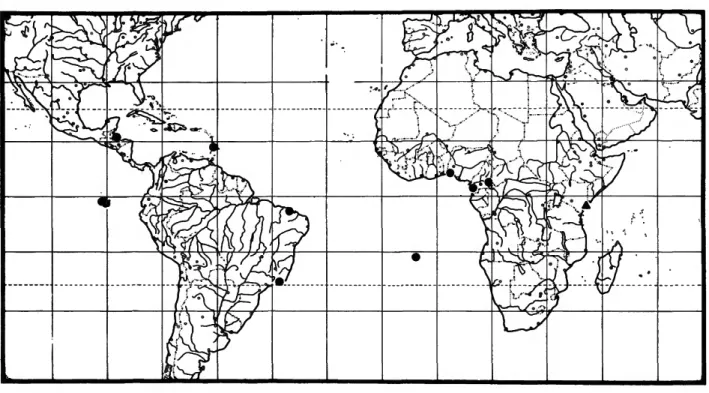
FIGURES 38, 39.—Hecamede (Hecamede) maritima: 38, male terminalia, lateral aspect; 39, internal structures of the male genitalia, lateral aspect. DIAGNOSIS.—This species group is distinguished from other congenital lineages of the subgenus Hecamede by the lack of intrafrontal. Cogan The holotype is double mounted (minute in a plastic foam rectangular block), is in good condition (Most of the abdomen has been removed and dissected. The parts are in a microvial attached to the pin.), and is deposited in the ZMA.
DIAGNOSIS. Because this species is the only known member of the planifrons group, its distinguishing features are listed in the. But on the right side of the shield only three bristles occur, and the latter is the more typical number for species of Hecamede. Hardy, editors, A Catalog of the Diptera of the Oriental Region, Volume III: Suborder Cyclorrhapha [excluding Division Aschiza], pages 321-339.
In Results of the Armstrong College Expedition to Siwa Oasis (Libyan Desert), 1935, under the leadership of Prof. A Systematic Annotated Arrangement of the Genera and Species of the Indoaustralian Ephydridae (Diptera), 1: The Subfamily Psilopinae. A systematic annotated arrangement of the genera and species of the Neotropical Ephydridae (Diptera), 1: The Subfamily Psilopinae.
A systematic arrangement of notes on the genera and species of Ethiopian Ephydridae (Diptera), I: Subfamily Psilopinae. Phylogenetic classification of the Diptera Cyclorrhapha with special reference to the structure of the male postabdomen. A revision of the subgenus Eremotrichoma Soika of the shore fly genus Allotrichoma Becker (Diptera: Ephydridae).
Studies in the Gymnomyzinae (Diptera: Ephydridae), II: A revision of the shore fly subgenus Pseudohecameda Hendel of the genus Allotrichoma Becker. Papavero, editor, Catalog of the Diptera of the Americas south of the United States, pages 1–43. Synonymy in zoology must use the short form (taxon, author, year), with full citation at the end of the paper under.
Extensive notes should be collected and placed at the end of the text in a notes section. For book and article titles, use sentence-like capitalization according to the rules of the language used (exception: all large words in English must be capitalized).
